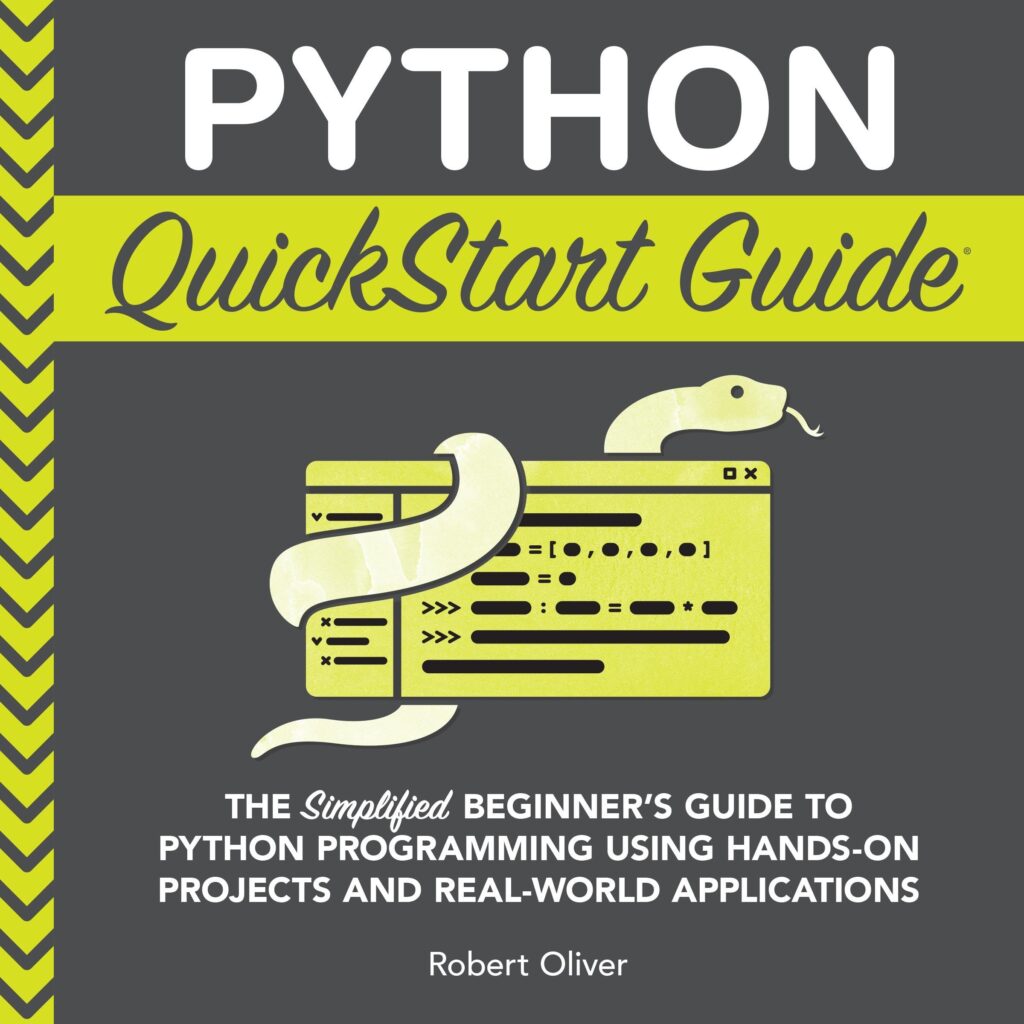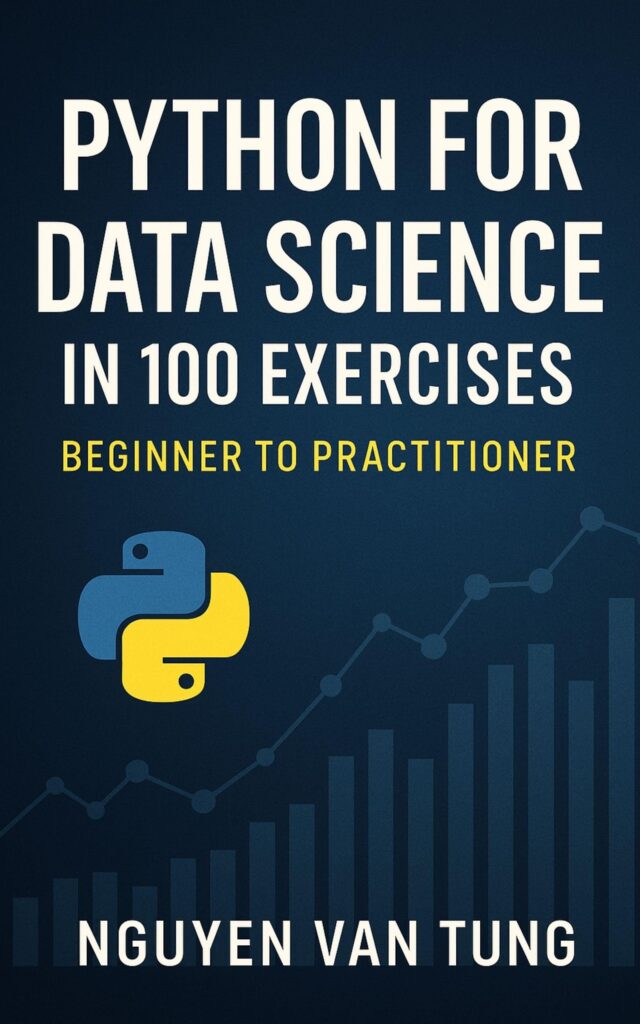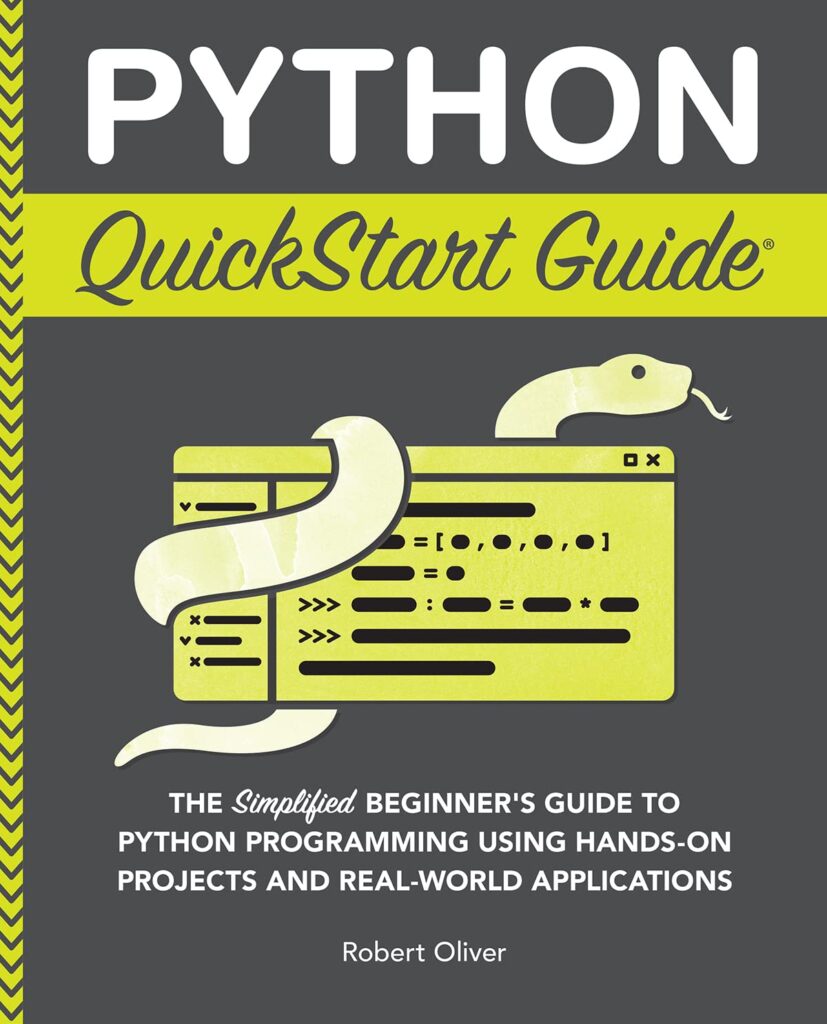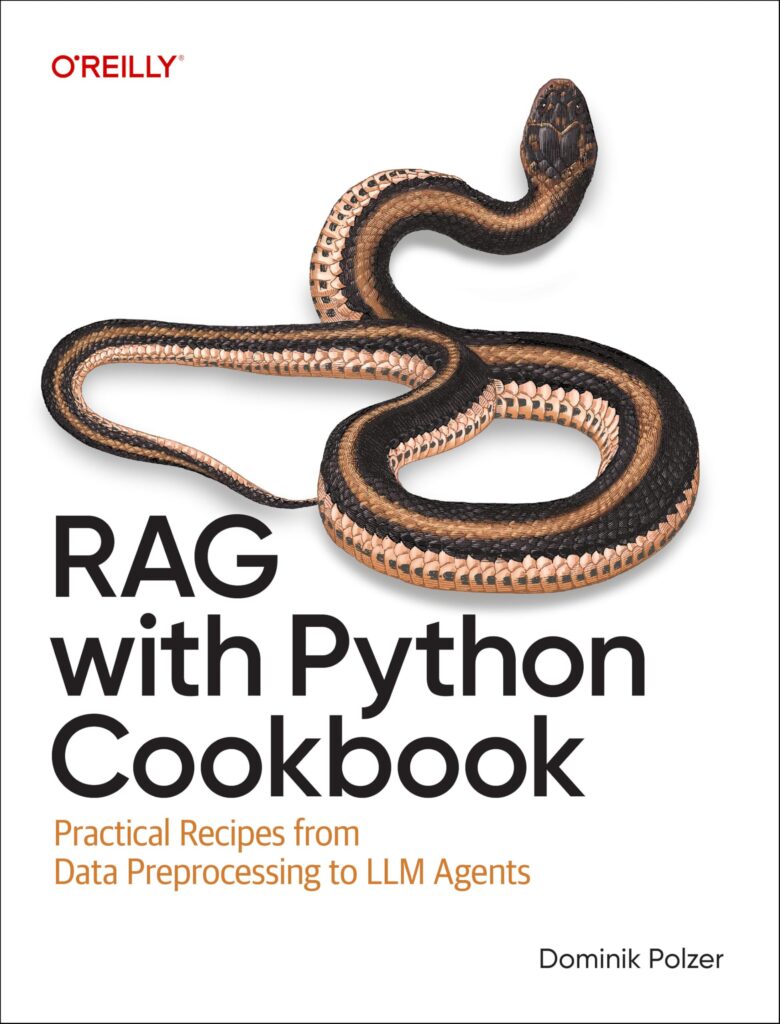
It is just there, isn’t it? Like a familiar doorknob you’ve turned a thousand times, yet rarely pondered its inner workings or the intricate latch mechanism hidden within the door’s edge. On every Django model you meticulously craft, or perhaps even on those you inherit from eons of previous development, this little sigil, objects, faithfully materializes. It’s not merely decoration, mind you, nor some quaint vestige of a forgotten design pattern. Oh no. It’s, in a rather delightful twist of programmatic fate, the primary conduit, the principal emissary, to the bustling metropolis of your data, patiently waiting to be addressed.
But what is this objects, this seemingly innate fixture upon the edifice of your models? Is it a sprite, a helpful homunculus automatically bound to your classes by the Django framework’s subtle enchantments? Not quite, though the effect can often feel as if a touch of magic were indeed involved. In truth, this omnipresent attribute is an instance of a django.db.models.Manager. Think of it, if you will, as the head librarian presiding over your model’s specific data-library. This librarian doesn’t just hand you books (or, in our less poetic, more concrete reality, database rows); it offers you sophisticated ways to request collections of books, or catalogs detailing certain genres, or even specific, uniquely identified volumes that you might recall by their call number.
Think a simple model, a humble representation of, say, a Book. We might define it with a certain simpler elegance:
from django.db import models
class Book(models.Model):
title = models.CharField(max_length=100)
author = models.CharField(max_length=100)
publication_year = models.IntegerField()
def __str__(self):
return self.title
Even without us lifting a finger to explicitly declare its presence, our Book model now possesses this objects attribute. It is as if the very blueprint for “Book-ness,” as specified by models.Model, inherently includes a clause: “And there shall be a means to access all instances of Thyself, and it shall be called objects, and through it, the world of data shall be queried.”
And what, precisely, does this librarian, this manager named objects, do for us? It furnishes methods. Methods that, in turn, conjure forth these peculiar entities known as QuerySets – a topic we shall explore with the fascination it deserves shortly. If you desire all the books currently cataloged in your collection, you might approach our librarian and state, quite simply, Book.objects.all(). This utterance, this gentle command, doesn’t immediately cause an avalanche of all books to tumble onto your digital desk. Heavens, no. That would be terribly inefficient, wouldn’t it, especially if your library numbered in the millions? Instead, it hands you something more subtle: a promissory note, a highly articulate description of your desire – a QuerySet.
Or perhaps your quest is for a singular, specific tome. You recall its identifier, its primary key – let’s imagine it’s 42. You would then convey your focused request to objects thus: Book.objects.get(pk=42). In this instance, if such a book indeed graces your shelves, it is promptly presented to you, an actual Book instance, ready for inspection. But if no such volume exists? Ah, then a most particular sort of consternation arises, typically in the form of an exception (Book.DoesNotExist, to be precise), for a request for the one, the unique, inherently implies its singular and unambiguous existence. Our librarian, you see, is remarkably precise and expects reality to conform to such pointed requests.
QuerySets, or, The Strange Loop of Deferred Desires
So, this promissory note, this QuerySet. It’s a curious beast, isn’t it? It doesn’t contain your books, not yet. It contains the idea of your books, or more accurately, the instructions to fetch certain books. Imagine you ask our esteemed librarian not for all books with Book.objects.all(), but for a more curated selection. Perhaps you’re interested only in those books penned by a certain “Ursula K. Le Guin.” You would articulate this nuanced request as Book.objects.filter(author="Ursula K. Le Guin").
# Let's assume our Book model from before # from django.db import models # # class Book(models.Model): # title = models.CharField(max_length=100) # author = models.CharField(max_length=100) # publication_year = models.IntegerField() # # def __str__(self): # return self.title # This creates a QuerySet, but doesn't hit the database yet le_guin_books_query = Book.objects.filter(author="Ursula K. Le Guin")
Now, what is this le_guin_books_query variable holding? Is it a list of Book instances? Not a chance. It’s, once again, a QuerySet. A new QuerySet, distinct from the one Book.objects.all() might have conjured, yet fundamentally of the same ilk. It is as if you’ve handed the librarian your original, very general, promissory note (for “all books”) and they’ve, with a knowing nod, appended a specific codicil: “Furthermore, ensure the author is ‘Ursula K. Le Guin’.” The note is now more detailed, more constrained, but it remains a note, a promise deferred.
That’s where the “loop” begins to close in on itself, or perhaps, where we see the layers of an infinitely onion-like structure. You can take this new QuerySet, le_guin_books_query, and further refine it. Suppose you’re only interested in Le Guin’s works published after, say, 1970. You could then layer on another condition:
# le_guin_books_query is ALREADY a QuerySet modern_le_guin_books_query = le_guin_books_query.filter(publication_year__gt=1970) # Alternatively, you could chain it directly: # modern_le_guin_books_query = Book.objects.filter(author="Ursula K. Le Guin").filter(publication_year__gt=1970)
And what, pray tell, is modern_le_guin_books_query? Why, it is another QuerySet, of course! Each operation – filter(), exclude(), order_by(), and a host of others – doesn’t (typically) force the database to spill its beans. Instead, it returns a new QuerySet, a more elaborate, more specific set of instructions. It’s like constructing an ever-more-detailed portrait of your desired data, but the canvas remains, for the moment, tantalizingly blank, awaiting the final brushstroke that commands, “Render now!”
This chainability, this act of taking a QuerySet and producing another QuerySet, is the heart of its power and its elegance. It’s a kind of linguistic game you play with your data, building up your request piece by piece. The “desire” – your ultimate wish for specific records – gets articulated with increasing precision, yet its fulfillment is gracefully, and efficiently, postponed. Each method call is like whispering a new constraint into the librarian’s ear, who diligently revises the master order slip without yet sending the page scurrying off to the stacks.
Observe the dunder notation, the double underscore in publication_year__gt. That is Django’s expressive way of specifying lookups beyond simple equality. Here, gt stands for “greater than,” allowing us to compare the publication_year field to the value 1970. There’s a whole vocabulary of these lookups: lt (less than), gte (greater than or equal to), lte (less than or equal to), contains, icontains (case-insensitive contains), startswith, endswith, isnull, and many more. Each expands the expressive power of your QuerySet, which will allow you to describe with remarkable fidelity the exact subset of reality you wish to summon.
You might even desire to exclude certain items. Perhaps, amidst your search for modern Le Guin, you wish to specifically omit “The Lathe of Heaven,” for reasons known only to your own literary sensibilities.
# modern_le_guin_books_query is still our QuerySet from before # It represents Le Guin books published after 1970 final_query = modern_le_guin_books_query.exclude(title="The Lathe of Heaven") # At this point, final_query is STILL a QuerySet. # No database query has been executed yet for any of these: # le_guin_books_query # modern_le_guin_books_query # final_query
What we have here is a cascade of deferred intentions. Each object – le_guin_books_query, modern_le_guin_books_query, final_query – is a snapshot of an evolving request. It is a strange loop because the result of operating on a QuerySet (your current desire) is another QuerySet (a refined desire). You’re always dealing with this proxy, this representation, never quite touching the “real” data until you absolutely must. This deferral is not mere procrastination; it’s a masterstroke of efficiency. Why bother the database, that busy and important entity, with intermediate thoughts or partial requests? Why make it sift through mountains of data only to say, “Oh, wait, I also meant…”? No, the QuerySet patiently accumulates your specifications, compiling them into what will eventually become a single, highly optimized SQL query, or perhaps a very small number of them, when the moment of truth finally arrives. This moment, this “when and how a QuerySet deigns to deliver,” is a story for another turn of the page, but the mechanism of deferral itself, this recursive refinement of desire, is the QuerySet’s most enchanting characteristic.
Consider the inherent recursion in the conceptual structure. A QuerySet is defined by its ability to produce other QuerySets, each a modification of its parent’s desiderata. It’s like a set of Russian dolls, where each doll contains a slightly smaller, slightly more specific version of the same form. Only when you try to look inside the innermost doll, perhaps by asking for its contents (iterating over it, slicing it, or calling a method that demands a concrete result like count() or exists()), does the entire nested structure collapse, as it were, into the actual items it represents.
This loop of deferral and refinement isn’t just syntactic sugar; it’s a deep design principle. If each filter() immediately hit the database, then chaining Book.objects.filter(author="...").filter(year__gt=...).exclude(title="...") would result in three separate database hits, each potentially less efficient than a single combined query. The QuerySet, by playing this game of “not yet, not yet,” allows Django’s ORM to be a remarkably intelligent intermediary. It can analyze the entire chain of requests represented by the final QuerySet and translate it into the most sensible SQL possible.
On the Art of Curating Queries: Managers as Benevolent Dictators of Data
Now, this objects attribute, this ever-present gateway, is indeed the default, the one generously provided by Django if you don’t specify otherwise. But who is to say a model must content itself with a single Master of Queries? Or that this default master cannot be tailored, imbued with specific proclivities or initial constraints? Indeed, the Django framework, in its wisdom, allows us to define our own custom managers, or even multiple managers, each acting as a distinct lens, a specialized curator for the data associated with our model.
Imagine our Book model again. Perhaps in our application, we frequently find ourselves needing to access only books that are currently “in print” or “available.” Repeating Book.objects.filter(status='available') throughout our codebase would be, shall we say, a tad repetitive, a small pebble of inelegance in the shoe of our otherwise sleek design. What if, instead, we could simply ask for Book.available_books.all()? That is precisely where custom managers step onto the stage, offering us a way to encapsulate such common data access patterns directly within the model’s interface to its data.
To create such a custom manager, one typically inherits from django.db.models.Manager and then, most crucially, overrides its get_queryset() method. This method is the fountainhead from which all initial QuerySets provided by this manager will spring. By overriding it, we can ensure that any QuerySet born from this manager already possesses certain characteristics, certain pre-applied filters or orderings. It is as if we’re instructing our specialized librarian, “Whenever someone asks you for books through your particular desk, only show them items from the ‘Available’ section to begin with.”
Let’s make this concrete. Suppose our Book model now includes a status field:
from django.db import models
class Book(models.Model):
STATUS_CHOICES = [
('available', 'Available'),
('out_of_print', 'Out of Print'),
('forthcoming', 'Forthcoming'),
]
title = models.CharField(max_length=100)
author = models.CharField(max_length=100)
publication_year = models.IntegerField()
status = models.CharField(max_length=20, choices=STATUS_CHOICES, default='available')
def __str__(self):
return self.title
# Now, let's define a custom manager
class AvailableBooksManager(models.Manager):
def get_queryset(self):
# We call super() to get the original QuerySet,
# and then we apply our custom filter.
return super().get_queryset().filter(status='available')
# And we attach it to our Book model
class Book(models.Model): # Redefining for clarity, imagine that is the same model
STATUS_CHOICES = [
('available', 'Available'),
('out_of_print', 'Out of Print'),
('forthcoming', 'Forthcoming'),
]
title = models.CharField(max_length=100)
author = models.CharField(max_length=100)
publication_year = models.IntegerField()
status = models.CharField(max_length=20, choices=STATUS_CHOICES, default='available')
objects = models.Manager() # The default manager, still present
available = AvailableBooksManager() # Our custom manager
def __str__(self):
return self.title
Observe the subtlety! We’ve created AvailableBooksManager. Its get_queryset() method takes the QuerySet that super().get_queryset() would normally return (which represents all books, unfiltered at this stage by the manager itself) and immediately applies a filter(status='available') to it. Then, within our Book model, we instantiate this manager and assign it to the attribute available. We also explicitly kept the default objects = models.Manager(). If we hadn’t, and available was the first manager defined, it would have become the default manager, replacing objects.
Now, when we write Book.available.all(), the QuerySet we receive is already pre-filtered. It is a QuerySet representing the idea of “all books that are also available.” If we were to write Book.objects.all(), we would get a QuerySet representing all books, regardless of their status. We have, in essence, provided two distinct starting points for our queries, two different “views” or “curations” of the underlying data, dictated by the respective managers.
But the art of curating queries through managers doesn’t stop at simply overriding get_queryset(). Oh no, that is merely the overture. Managers can also be endowed with entirely new methods, methods that perform common tasks or construct more complex queries, acting as convenient shortcuts or encapsulations of business logic related to data retrieval or even creation. These methods operate at the “table level,” so to speak, rather than on individual instances of the model.
Suppose we frequently need to find books published in a specific year by a specific author. We could add a method to a manager for this:
class BookManager(models.Manager):
def get_queryset(self):
# Let's say this manager, by default, always orders by title for some reason
return super().get_queryset().order_by('title')
def books_by_author_and_year(self, author_name, year):
# Note: self here is the Manager instance.
# self.get_queryset() gives us the base QuerySet already ordered by title.
return self.get_queryset().filter(author=author_name, publication_year=year)
def create_book_with_tracking(self, title, author, publication_year):
# Managers can also have methods that create objects
print(f"LOG: Creating book '{title}' by {author}") # A trivial tracking example
book = self.create(title=title, author=author, publication_year=publication_year)
return book
class Book(models.Model):
# ... (fields as before) ...
status = models.CharField(max_length=20, default='available') # Simplified status
# Let's make our custom BookManager the default one named 'objects'
objects = BookManager()
# We could still have another manager if needed, e.g., an unfiltered one
# all_records = models.Manager()
def __str__(self):
return self.title
# Usage:
# specific_books will be a QuerySet of books by 'Jane Austen' from 1813, ordered by title
# specific_books = Book.objects.books_by_author_and_year(author_name="Jane Austen", year=1813)
# pride_and_prejudice = Book.objects.create_book_with_tracking(
# title="Pride and Prejudice",
# author="Jane Austen",
# publication_year=1813
# )
Here, our BookManager (which we’ve assigned to the conventional objects attribute, making it the default) not only provides a base QuerySet that’s always ordered by title (due to its overridden get_queryset()) but also offers a new method, books_by_author_and_year(). This method takes an author and year, and returns a further filtered QuerySet. It uses self.get_queryset() to start from its own version of the base QuerySet, thereby inheriting the default ordering. It also offers a create_book_with_tracking method, demonstrating that manager methods aren’t restricted to just returning QuerySets; they can perform any action that makes sense at the “class level” or “table level” for that model, such as creating an instance with some ancillary logic.
This is where the “benevolent dictator” aspect comes into play. By crafting thoughtful managers, we guide ourselves and our fellow developers towards common, efficient, or canonically “correct” ways of interacting with the model’s data. The manager provides pre-packaged units of querying logic. It says, “If you want available books, here’s the available manager. If you want to find books by author and year in the standard way, use objects.books_by_author_and_year().” It’s not that you *can’t* construct these queries from scratch using filter() and order_by() on a more basic QuerySet; it’s that the manager offers a more expressive, domain-specific vocabulary for doing so. It curates the initial interaction, setting the stage for the QuerySets that follow.
One curious point: when Django needs to access *all* objects of a model internally, especially for operations like deletions that must cascade correctly, or when traversing relationships from the “other” side where no specific manager was invoked, it uses what’s called the _base_manager. By default, that’s the first manager defined in the model, or models.Manager() if none are. If your default manager (e.g., your customized objects) filters out records, Django might sometimes need to bypass this filtering for its internal bookkeeping. You can also explicitly specify which manager should be the _base_manager or the default_manager_name on the model’s Meta class, giving you fine-grained control over these foundational behaviors.
This layering of responsibility – the model defining its structure, the manager curating access to collections of its instances, and the QuerySet representing a specific, deferred desire for those instances – creates a rather elegant architecture. The manager acts as an intelligent gatekeeper, one that doesn’t just hand over the keys to the entire data vault, but often presents you with a more refined starting point, a QuerySet already shaped by some initial wisdom or common requirement. It’s a subtle form of indirection, but one that greatly enhances the expressiveness and maintainability of data access code.
You are, in essence, querying the manager, which in turn sculpts the initial QuerySet, which itself is a blueprint for a query. A chain of command, if you will, from your Python code down to the database, with the manager playing a pivotal role in defining the initial terms of engagement. This allows the subsequent QuerySet manipulations to build upon a contextually relevant foundation, rather than always starting from the raw, unfiltered totality of the model’s data. It’s a way of embedding common query patterns right into the model’s interface to the world, almost like giving the model itself a set of pre-defined “moods” or “perspectives” through which its data can be viewed. The manager, then, is not just a provider of QuerySets; it’s a definer of the initial states from which those strange loops of deferred desires begin their dance. And this definition, this initial curatorial act, often reflects a deeper understanding of how the model’s data is most meaningfully approached, shaping your path before you even take the first step of filtering or ordering.
It’s a testament to the idea that sometimes, the most powerful way to control a complex system is to thoughtfully design its entry points, its primary modes of interaction. The manager, in its quiet way, does precisely that, acting as both a servant and a subtle guide in your journey through the data landscape. It doesn’t just open the door; it often points you towards the most interesting rooms first, ensuring the conversation with your data begins on a productive and relevant note. This initial shaping is key, for it sets the context for all subsequent refinements, like a composer choosing the initial key signature and tempo before the melody itself unfolds through the sequence of QuerySet operations.
The manager says, “Let’s start by looking at things *this* way,” and from that vantage point, your specific, detailed queries can then diverge and explore. The manager’s role is to establish that initial vantage point, and in doing so, it wields considerable, albeit often invisible, influence over how the data is ultimately perceived and retrieved. This subtle direction, this framing of the default conversational path with your data, is where the manager truly shines as a curatorial force, almost like a museum director deciding which exhibits are immediately visible upon entering the grand hall, thereby shaping the visitor’s initial experience and subsequent exploration.
Each custom method added to a manager is like adding another specialized tour guide, ready to lead you directly to a specific collection of interest. These guides don’t just hand you a raw list; they present a coherent subset, often with inherent logic baked into their selection process, a logic that transcends a simple database filter and enters the realm of application-specific meaning. Ponder, for example, a manager method get_trending_articles() on an Article model.
This method would encapsulate far more than a simple filter(); it might involve complex calculations based on views, likes, and publication dates, all hidden behind a clean, descriptive interface provided by the manager. That is the manager not just as a filterer, but as an aggregator and presenter of higher-order information derived from the raw data. It elevates the interaction from “show me rows where X” to “show me what’s important according to criteria Y.”
This ability to add arbitrary methods to a manager is incredibly powerful. It allows you to push domain-specific logic for data retrieval and even creation or updates down into the manager layer, keeping your views or other business logic cleaner. Instead of repeating complex QuerySet constructions across multiple parts of your application, you centralize that logic in one place: the model’s manager. It becomes a focal point, a dedicated API for interacting with that model’s data in complex or common ways.
If the logic for what constitutes a “popular book” changes, you change it in one place in the BookManager, and all call sites benefit. It is a beautiful dance of encapsulation and responsibility. The model knows about its fields, the QuerySet knows how to describe a database query for instances of that model, and the Manager knows how to provide useful starting QuerySets or entirely custom methods to access or manipulate collections of those instances. It’s a system of components, each with a clear role, working in concert.
Peeling Back the Procrastination: When, and How, a QuerySet Deigns to Deliver
And so, this intricate dance proceeds: the model defines its essence, the manager curates the initial approach, and the QuerySet, ah, the QuerySet holds aloft the banner of pure, unadulterated intention. It’s a promise, a carefully constructed desire, a blueprint for a reality it has not yet bothered to manifest. This deferral, this elegant sidestepping of immediate action, isn’t a sign of laziness in the pejorative sense; rather, it’s a profound computational wisdom. Why awaken the slumbering giant of the database for every fleeting thought, every intermediate clause in your grand request? No, the QuerySet patiently accumulates your design, refining the specification, polishing the request until… until what, precisely? When does this elaborate procrastination cease, and the QuerySet finally deign to deliver the goods, to transmute itself from a description of data into the data itself?
The moment of reckoning, the point at which a QuerySet is “evaluated” – a rather sterile term for such a magical transformation – is not capricious. It occurs when you, the programmer, in your insatiable quest for information, perform an action that implicitly or explicitly demands concrete results. The QuerySet, until then a purely abstract construct, is forced to confront the database and say, “Alright, the time for hypotheticals is over. Show me what you’ve got.”
One of the most common ways to awaken a QuerySet from its contemplative slumber is simply to ask it to reveal its members, one by one. Iteration, that humble workhorse of programming, is a primary catalyst. When you write something like:
# Assuming 'Book' model and 'objects' manager as before
all_books_query = Book.objects.all()
for book_instance in all_books_query:
print(f"Found book: {book_instance.title}")
The moment the for loop begins, or rather, the moment it needs the first book_instance, the all_books_query QuerySet springs into action. It connects to the database, translates its accumulated instructions (in this case, “fetch all records from the ‘book’ table”) into SQL, executes that SQL, and starts receiving rows of data. These rows are then lovingly inflated into full-fledged Book model instances, one for each row, and fed into your loop. The database isn’t hit again for each subsequent book_instance *within that same iteration sequence over that specific all_books_query object*. The QuerySet, having made its initial grand journey to the data-well, typically fetches all the results it was asked for (or a sensible chunk, depending on server-side cursors in some databases, though often it is the whole shebang) and stores them internally. This internal cache, _result_cache as it’s known in the Django corridors, means that if you were to iterate over all_books_query *again*, it would (usually) serve you the already-retrieved instances without pestering the database anew.
Slicing a QuerySet can also provoke its evaluation, though with some delightful subtleties. If you attempt to grab a specific element using an index, like so:
# Continuing with all_books_query from above first_book_maybe = all_books_query[0]
This act of indexing, [0], forces the QuerySet to go fetch, at the very least, that first book. Behind the scenes, Django is often clever enough to translate this into an optimized SQL query like LIMIT 1 OFFSET 0. However, once fetched, this result (and potentially others, depending on how Django handles the initial fetch for indexing) would be stored in the QuerySet’s _result_cache. If you then ask for all_books_query[1], and the cache was populated sufficiently, it might come from this cache. If you take a slice, some_books = all_books_query[5:10], this too will hit the database, often translating into an SQL query with LIMIT 5 OFFSET 5. The resulting subset of Book instances is then returned as a new list (or rather, a list-like object containing model instances). Crucially, performing a slice like this typically doesn’t evaluate the *entire original* QuerySet, only the portion requested, which is quite sensible.
There are more direct, less ceremonious ways to demand results. If you explicitly convert a QuerySet to a list:
list_of_all_books = list(all_books_query)
This is an unambiguous command: “Cease your conceptualizing and give me everything, now, in a tangible list format!” The QuerySet obliges, hits the database, fetches all matching records, instantiates them, and populates the list. The _result_cache of all_books_query will then be full.
Similarly, asking for its length with len():
number_of_books = len(all_books_query)
This might seem like it would require fetching all objects just to count them. But no! Django is more astute. This usually translates into a SELECT COUNT(*) FROM ... SQL query, which is far more efficient. The database does the counting, returns a single number, and the QuerySet now knows its size. Interestingly, this action populates the _result_cache not with instances, but with the results of this count (or rather, it sets internal flags; the full cache isn’t necessarily populated unless it was already). If you then iterate, it might still need to do the full fetch. However, if you had already iterated and fully populated the cache, len() would often just count the items in the cache without a new database hit.
Testing a QuerySet in a boolean context, for example, in an if statement:
if all_books_query: # Does at least one book exist?
print("Yes, the library has books.")
else:
print("The library is sadly empty.")
This doesn’t foolishly fetch all books just to see if there’s at least one. Instead, Django cleverly executes a query designed to be maximally efficient for this exact question, typically something akin to asking for just one record (LIMIT 1). If a record is found, the condition is true. This is the essence of the .exists() method, which we’ll touch upon. The QuerySet’s _result_cache might get a single entry, or an internal flag might be set.
Then there are methods whose very name screams “I need a concrete answer!” The get() method, which we encountered briefly, is a prime example. Book.objects.get(pk=42) doesn’t return a QuerySet; it returns a single Book instance or raises an exception (DoesNotExist if no such book, MultipleObjectsReturned if, heaven forbid, your primary key isn’t as unique as you thought, or if the query itself was ambiguous and matched multiple records). There’s no deferral here; get() is a direct, immediate demand for a singular entity.
Functions like count() and exists() are explicit requests for database interaction too, but optimized for their specific questions:
# Assuming modern_le_guin_books_query from a previous example
# modern_le_guin_books_query = Book.objects.filter(author="Ursula K. Le Guin", publication_year__gt=1970)
num_modern_le_guin = modern_le_guin_books_query.count()
are_there_any_modern_le_guin = modern_le_guin_books_query.exists()
if are_there_any_modern_le_guin:
print(f"Found {num_modern_le_guin} modern Le Guin books.")
The count() method, much like our len() example, executes a SELECT COUNT(*) ... query. The exists() method is even more parsimonious; it typically performs a SELECT (1) AS "a" FROM "book" WHERE ... LIMIT 1 (or similar). It just needs to know if that “1” comes back or not. That is generally faster than doing .count() > 0 if all you need is a boolean existence check, as it can stop as soon as it finds the first matching row.
Other methods like first(), last(), earliest(), and latest() also force evaluation because they promise to return a single model instance (or None if the QuerySet is empty, unlike get() which would raise an exception). qs.first() is roughly equivalent to trying qs[0] but with friendlier behavior for empty QuerySets, often implemented with a LIMIT 1 and appropriate ordering. earliest('publication_year') would find the book with the smallest publication year, hitting the database to do so.
This internal caching by a QuerySet instance is an important feature. Once all_books_query (from our earlier example) has been iterated over, its _result_cache is populated. Subsequent calls to list(all_books_query) or a new for book in all_books_query: loop will, by default, use these cached results without re-querying the database. That is generally what you want – you asked for a set of data, it was fetched, and now that particular QuerySet object “knows” its results.
However, it’s vital to understand that this cache belongs to that specific Python object, that instance of the QuerySet. If you create a new QuerySet, even if it is defined identically:
query1 = Book.objects.filter(author="Ursula K. Le Guin")
for book in query1: # First database hit for query1
pass
# Later...
query2 = Book.objects.filter(author="Ursula K. Le Guin") # A NEW QuerySet object
for book in query2: # Second database hit, for query2
pass
# Even if you did:
# list(query1) # Populates query1's cache
# are_they_the_same_object = (query1 is query2) # This would be False
# list(query2) # This would still hit the database because query2 has its own empty cache
query1 and query2 are distinct Python objects, each with its own potential _result_cache. The evaluation of query1 does not populate query2‘s cache. So, if you need to use the “same” set of results multiple times, ensure you are re-using the same QuerySet instance that has already been evaluated. If you pass a QuerySet around, and some part of your code evaluates it, later parts using that same QuerySet instance will benefit from the cache. But if you re-run the code that generates the QuerySet (e.g., Book.objects.filter(...)), you get a fresh, unevaluated QuerySet each time, primed for a new conversation with the database once its results are demanded. This distinction between the definition of a query and the stateful, cached QuerySet object that results from evaluation is a subtle but fundamental aspect of how Django mediates your interactions with the underlying data store.
The QuerySet isn’t just a static blueprint; once evaluated, it becomes a container, a snapshot of a past reality retrieved from the database. This snapshot endures for the lifetime of that Python object, unless you explicitly take actions to clear or ignore its cache, for instance, by re-evaluating it through methods like .all() chained again if you suspect the underlying data has changed and you need a fresh look from the database on that particular instance (though typically one might just generate a fresh QuerySet instance for such a need).
Consider the case where you hold onto a QuerySet instance, its cache populated. If, through some other means, the data in the database changes, your cached QuerySet will remain blissfully unaware, reflecting the state of the world as it was at the moment of its last evaluation. This can be a source of confusion if not anticipated; the QuerySet does not, by itself, magically stay “live” or auto-update. It’s a snapshot, not a persistent real-time window, unless you continuously re-evaluate it.
The very act of “peeling back the procrastination” fixes a version of reality into the QuerySet’s internal memory. This fixing is often desired, providing a consistent view of data for a series of operations. Yet, it also means that the QuerySet, once it has deigned to deliver, might then stubbornly cling to what it has delivered, resisting new peeks at the database unless explicitly prompted again through a mechanism that bypasses or refreshes its cache, or, more commonly, by simply generating a new query from the starting blocks of a manager.
This choice, between using a cached result and re-fetching, is often implicit in how you structure your access. If you call my_queryset.count() twice, the second call might be instantaneous if the first one was a SELECT COUNT(*) and the QuerySet is smart enough to remember. But if the first call was list(my_queryset), then len(my_queryset._result_cache) (conceptually) would be used for the second count() call.
The exact optimizations can be quite intricate, but the general principle holds: evaluation happens upon demand, and results are cached per QuerySet instance. This implies a certain responsibility on the developer’s part to understand when a QuerySet instance might be holding onto stale data if the database is volatile and fresh data is paramount for subsequent operations using that same instance. More often, the pattern is to get a QuerySet, evaluate it if necessary (e.g., by iterating in a template or passing to list()), and then if fresher data is needed later, a new QuerySet is constructed and evaluated.
The old one might still be around, a relic of a past query, its cached results a testament to a specific moment in the database’s history. The database itself, of course, marches on, its state evolving, quite independently of the little cached worlds held within your Python QuerySet objects. The database query, once executed, is a historical event. The QuerySet remembers that event’s outcome, but not necessarily subsequent events, unless it is asked to look again. It is this deliberate act of “looking again,” which means triggering a fresh evaluation, that bridges the gap between the QuerySet’s memory and the database’s current truth. And how does one ask it to look again at the *same* instance?
Sometimes, there isn’t a direct “re-evaluate this very instance and update its cache” method this is commonly used, because re-running the chain of filter().exclude().order_by() often yields a new QuerySet instance anyway. If you have qs = Book.objects.all() and you iterate it, then some books are added, then you iterate qs again, you see the original set. If you do qs_new = Book.objects.all() and iterate *that*, you see the new set. The original qs is unchanged. That’s an important point of stability. However, certain operations might implicitly re-evaluate. For example, if you had a QuerySet, qs, and you then did qs = qs.filter(author="X"), this qs is now a *new* QuerySet derived from the old one. If the original qs was cached, this new one is not, and its evaluation will be fresh.
The subtlety is whether operations *modify the existing QuerySet’s SQL definition and clear its cache* or *return a new QuerySet instance*. Most chaining operations return new instances. This ensures that:
initial_query = Book.objects.filter(publication_year__lt=2000) # At this point, initial_query is unevaluated. Let's say it *would* match 100 books.






